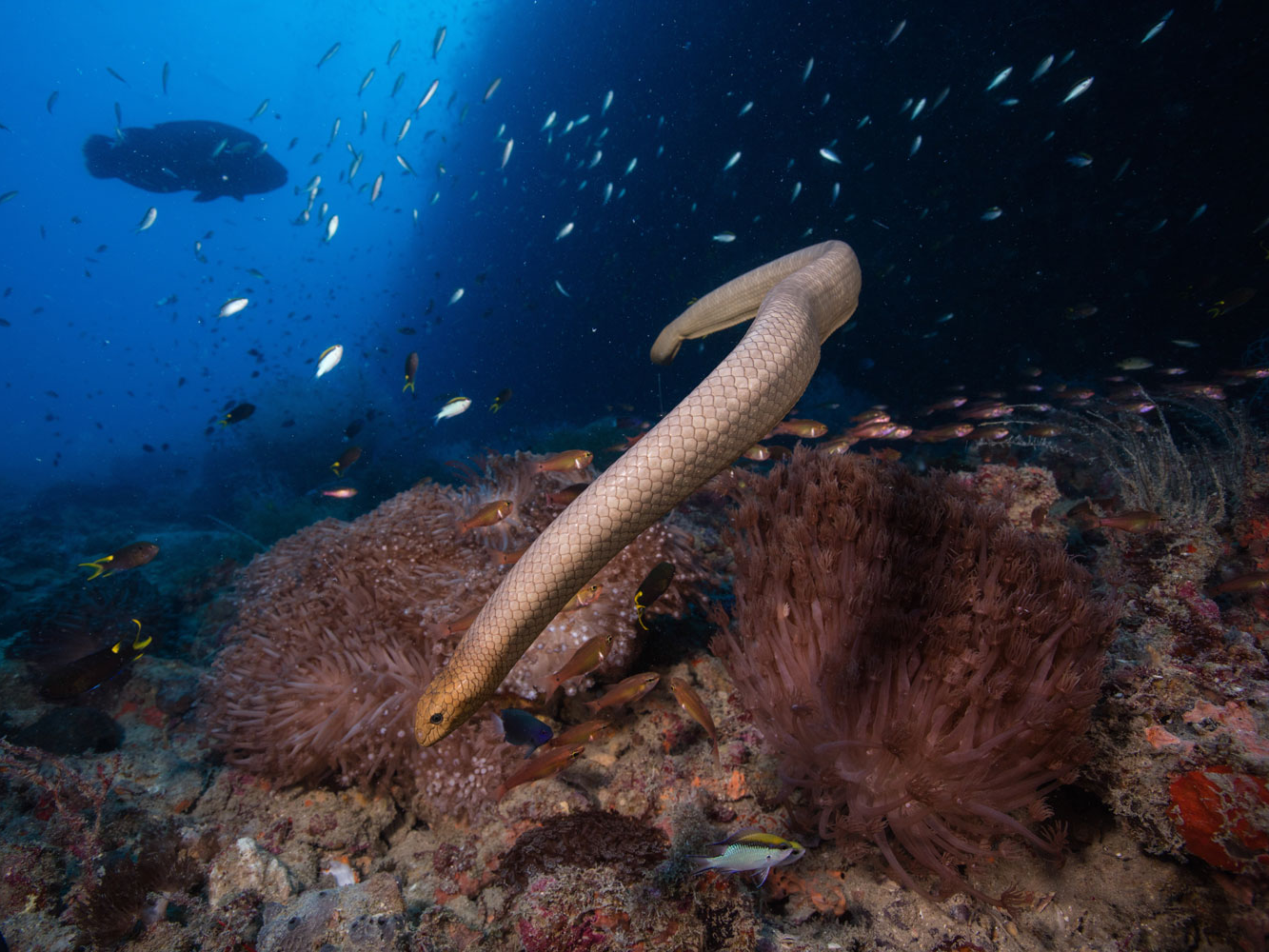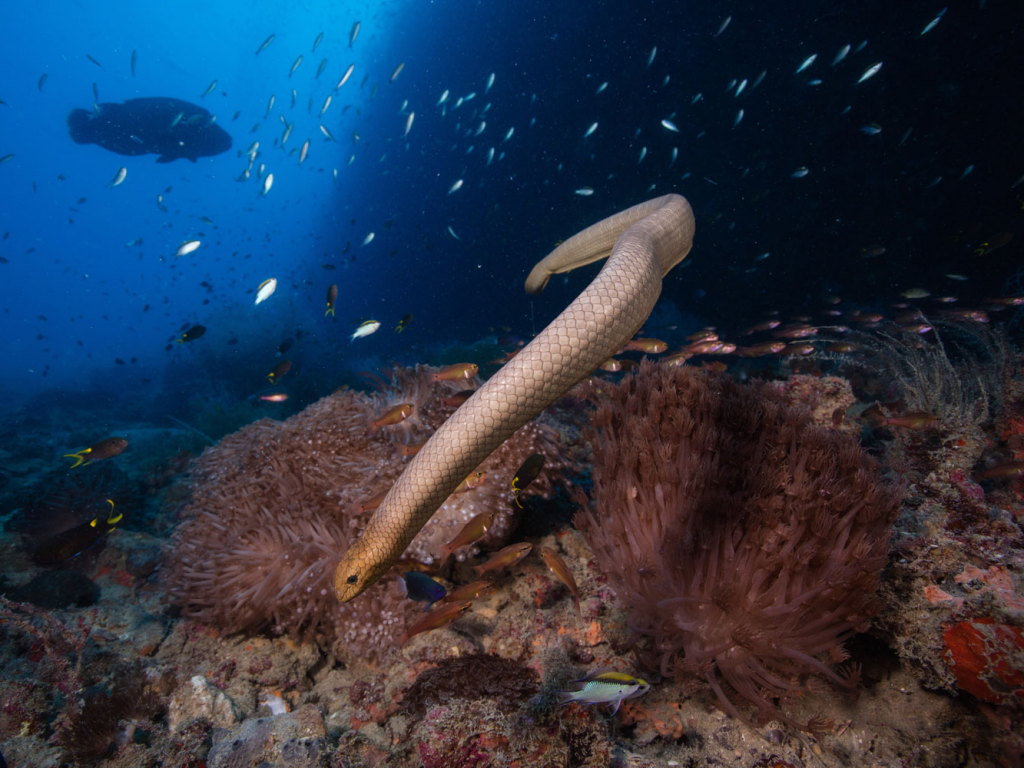
Gabriel Guzman/Shutterstock
- Venomous sea snakes that inhabit tropical coral reefs may be mistaking divers for potential mates.
- A team of researchers believes the snakes' bad eyesight is causing misdirected courting behavior.
- Such behavior includes spending time chasing divers and coiling around the swimmers' limbs in a courtship ritual.
- Visit Insider's homepage for more stories.
A new study has found that venomous sea snakes may be mistaking divers for potential mating partners during their breeding season.
By looking into the behavior of male olive sea snakes near tropical coral reefs, scientists at three Australian universities found in their joint research that the highly-aroused creatures may, because of their terrible eyesight, be confusing divers for female snakes or potential rivals.
These sea snakes are commonly found in Australia's reefs and in smaller habitats off Indonesia, New Caledonia, and Papua New Guinea, particularly in reef flats around 30 to 130 feet beneath the surface. The International Union for Conservation of Nature does not have a conclusive estimate on the size of the olive sea snake population but noted that its numbers might be decreasing because their habitats are being altered by human intrusion and climate change.
The researchers discovered that male olive sea snakes, in particular, are displaying "misdirected courtship responses" like spending loads of time with divers and coiling around their limbs and diving fins.
The research team noted, too, that the sea snakes cannot tell a diver from another snake until they lick the object to identify it.
"An amorous male snake has to approach its target close enough to tongue-flick the skin," wrote researchers Tim Lynch, Ross Alford, and Richard Shine, adding that sea lions, dolphins, and sea turtles had also been observed in the past mistaking humans for potential mates.
"At first sight, the idea that a snake might mistake a human diver for another snake seems ludicrous, given the massive disparity in size and shape between those two objects. Nonetheless, this offers the most plausible explanation for our observations," they wrote.
The study also found that the snakes might be pursuing divers and approaching them aggressively, even striking out at camera reflections, after confusing swimmers for rival male sea snakes.
"Agitated rapid approaches by males, easily interpreted as 'attacks,' often occurred after a courting male lost contact with a female he was pursuing, after interactions between rival males, or when a diver tried to flee from a male," wrote the researchers.
The scientists added that while these sea snakes are venomous, being bitten is highly unlikely unless the animal feels threatened or is hurt. Dying from a sea snake bite is very rare. The last reported death from a sea snake bite in Australia was in 2018, when a 23-year-old British backpacker traveling on a fishing trawler died after being bitten by a snake that he netted.
Divers are advised to stay still and avoid the impulse to fight the snake off or to flee quickly. Swimming quickly inadvertently mimics how female snakes respond to courtship, and encourages the male snakes to keep chasing their target.
"Attempting to flee is likely to be futile and may even increase the ardor of the pursuit," Lynch, Alford, and Shine wrote.
